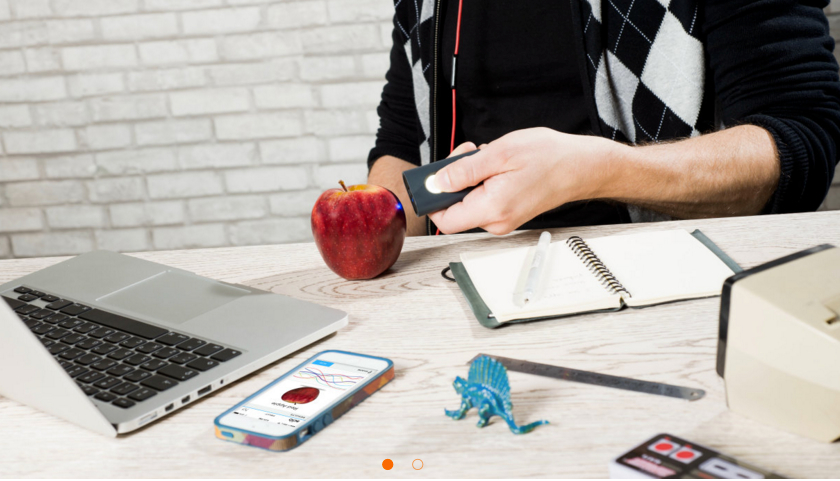Near-infrared spectroscopy ready for consumer use

Embeddable NIREDs such as the Oslon Black SFH 4736 or Synios SFH 4776 are driving mobile spectroscopy, says Osram
Osram Opto Semiconductors has developed a new generation of embeddable broadband near infrared LEDs (NIREDs) which it says will enable consumers to scan freshness or ingredients of food via mobile devices. Mobile spectroscopy, as the technology is being called, can measure nutrients, calorie content and freshness.
Near-infrared spectroscopy based on LED technology uses the characteristic light absorption behaviour of certain molecular compounds. If a defined light spectrum is directed at a sample it is possible to determine the presence and quantity of certain ingredients from the wavelength distribution of the reflected light. It is possible, for example, to measure the water, fat, carbohydrate, sugar or protein content of food.
Using various sampling accessories, infrared spectrometers can accept a wide range of sample types such as gases, liquids, and solids. NIREDs act as a compact light source for the spectrometer.
Making this possible are embeddable NIREDs such as the Oslon Black SFH 4736 or Synios SFH 4776, says Osram. Due to a new phosphor technology and integrated optics the Oslon Black SFH 4736 has increasing the light intensity by an impressive 60 percent compared to predecessor components. The primary optics bundle 90 percent of the generated light within a beam angle of +/-40°, providing considerably more optical power per unit area on the target object – in other words focusing the light precisely where it is needed. As a result, more light is reflected to the spectrometer, leading to a stronger measured signal.
The Synios SFH 4776 with its tiny and robust package shows this impressive intensity improvement. For the customer this means an improved signal-to-noise ratio which is enabling simpler analysis of the molecular makeup of food and medicines. Up to now, infrared spectroscopic analysis has been limited to scientific use by chemist and physics laboratories. The progress towards miniaturisation however now enables the integration of NIREDs into space-critical applications such as mobile phones.
The basis of the described NIREDs is a blue 1 mm² chip based on the UX:3 chip technology, developed by Osram Opto Semiconductors, which provides high luminous efficacy even at high currents. Its light is converted into infrared radiation with the aid of a phosphor converter developed specifically for this application. A residual blue component in the light helps users target the area they want to investigate. The emission spectrum of the NIREDs has a homogeneous spectral distribution in the infrared range from 650 nm to 1050 nm. The Osram Oslon Black Flat SFH 4735, Oslon Black SFH 4736 and Synios SFH 4776 are the first and still the only LEDs on the market with this broad spectral range in the near infrared regime.
First devices using the new NIRED-technology have already been unveiled to the consumer sector. An example is the micro-spectrometer SCiO, introduced by the Israeli startup Consumer Physics.
Using, Osram’s NIREDs, the smartphone-operated and cloud-connected solution resembles a matchbox in shape and size. It leverages infrared spectroscopy to identify certain compounds like fat, sugar, water or proteins in food, medicine and even the human body and analyses them in real time, instantly providing consumers and businesses with relevant and actionable insights about the physical world.
However, near-infrared spectroscopy is only at its beginning, opening more new application fields for both the consumer and professional use.


































